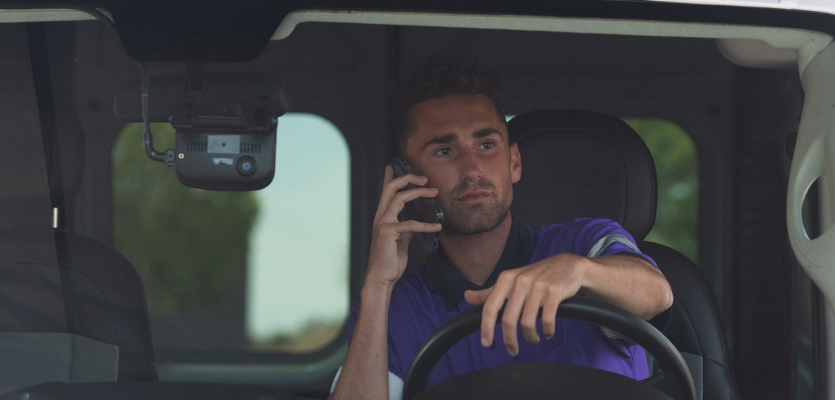Artificial intelligence (AI) has become an integral component of the driving experience. Many new vehicles include basic AI features such as lane detection and the ability to stop automatically when an obstacle is detected. AI is like a "brain" that can interpret a set of information and make a decision about risk. Driver assistance AI systems often rely on cameras connected to machine vision systems that allow the AI to “see” and recognize objects or events.
For commercial fleets, safety is paramount. Truck drivers, technicians, and millions of workers who drive as part of their job log millions of miles every day, so any safety improvement can have a significant impact for everyone on the road. That’s why companies are increasingly turning to AI to help them identify risks in their fleets. But not all AI solutions have the same capabilities. AI systems that only capture broad categories of risk, for example, don't provide the full context to help fleets manage risk comprehensively. The right AI, used to detect specific risky driving behavior, is one of the most important tools to help fleets save both money and lives.
In commercial settings, general AI just isn't enough. You need specialized machine vision and artificial intelligence (MV+AI) tailored to the job. MV+AI works by providing a high volume of validated visual and telematics data to a learning system called a neural network, teaching it how to detect and identify risky driving behaviors and situations.
Accuracy matters
The most effective way an AI improves safety is by identifying specific risks so they can be managed. That's why accuracy matters. To reliably identify risky behaviors, an AI algorithm must learn to interpret input data correctly and apply it properly to driving scenarios in real time.
At Lytx, we combine video telematics with machine vision, artificial intelligence, and driving data to help solve our industry’s most critical problems, like distracted driving. In 2021, Lytx analyzed and labeled more than 134.8 million driving events across a multitude of conditions, capturing key causes of driver distraction and increased risk, including cell phone use, driving without a seat belt, smoking, eating, drinking, and other distractions.
As part of continuously improving our algorithms' accuracy, we regularly monitor their performance in the field under real-world conditions, not just in artificial test environments with one or two vehicles. For example, Lytx leverages data from a representative sample of more than 220,000 DriveCam devices across 2,500 fleets that complete more than 7 million trips a week. Using this sample, our algorithm's average accuracy is 95% or greater across a number of driving risks.*
Data in, quality out
To learn how to identify risky behavior, AI needs data—a lot of it. The quality and quantity of data rely on three factors:
- Volume – how much data is available to the learning system
- Variety – diversity of information, which helps the AI learn to separate anomalies from confirmed patterns across a wide range of driving scenarios
- Velocity – the speed at which new data enters the system, helping improve accuracy to keep up with changing circumstances, behaviors, and technologies
Lytx MV+AI technology is validated and backed by the largest and fastest-growing driving database of its kind, which is currently growing by approximately 200,000 new driving events each day, further training and improving its algorithms. In 2021, we added 35 billion miles of data to our database, bringing the total to 185 billion miles of driving data—the industry’s largest database of its kind. Collecting a high volume of data at a high velocity helps us update and improve our artificial intelligence technology, so it’s always learning, refining, and getting better.
AI and human intelligence: a great team
It's not enough to just throw data at a neural network and hope for the best. Like any student, AI algorithms need help to discern real patterns from anomalies or irrelevant information. Data validated by humans provides AI with the most accurate ability to discern a wide array of specific behaviors, including drowsiness, inattention, eating, drinking, smoking, or using a cell phone. According to Forbes, the accuracy achieved by combining human validation with AI models is greater than what either humans or AI can attain on their own.
Lytx uses human-validated data to cut through the noise, identifying risky patterns and delivering moments of context that show the bigger picture of true risk throughout a driver's day.
Make sure you have the right AI for the job
AI is a valuable part of many driver assistance solutions today, but not all AI is created equal. To manage fleet risk, make sure you have the right AI tool for the job.
MV+AI tailored to the professional driving environment and trained on a high volume of diverse, validated data can help provide a more comprehensive picture of risk in real time. This lets you focus on coachable moments that actually matter, keeping your drivers and fleet protected and your business running smoothly.
*Actual observed accuracy may vary based on specific fleet conditions.
